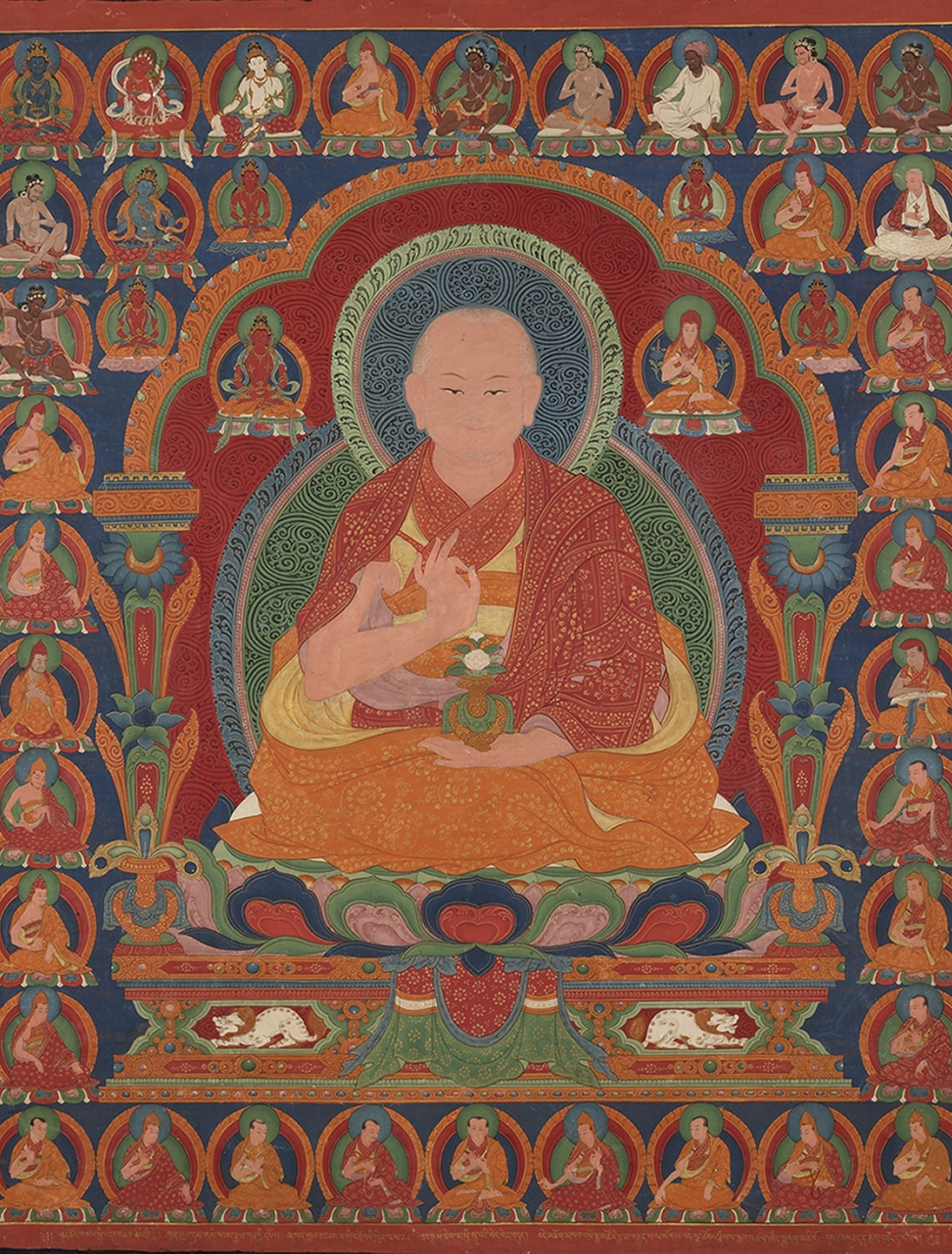
The back of this thangka encapsulates Buddhist belief expressed in mantras and dharanis (longer sacred formulas), which convey the intentions of the religious master Sanggye Sengge and his lineage. These figures are depicted on the front. The text in the center forms the shape of a stupa, a representation of the Buddha’s mind, the ultimate source of the Buddha’s teachings and practice. The opening dharani of consecration is believed to call the living presence of the Buddhas into the thangka. The concluding dharani begins with a famous verse, which in translation reads:
“Of those phenomena produced from causes, the Tanhagata has proclaimed their causes and also their cessation. Thus has spoken the great renunciant.”
These verses, taken from an early sutra that is common to all Buddhist traditions, summarizes the Buddhist philosophical worldview and path to salvation. Following them, the mantras invoke deities of wealth and tantric power such as Mahakala, Vaishravana, Jambhala, and Vasudhara, who are not depicted on the front but also empower this thangka through the force of belief.
The Tibetan text between the Sanskrit dharanis comes from the Vinaya and empowers images with the intentions of a Buddhist monk or nun. It outlines the solemn commitments and vows that ordained Buddhists undertake:
Forbearing patience that bears hardships is the truest patience
Passing beyond suffering [nirvana] is supreme, said the Buddha
An ordained person who harms others
or brings harm upon others, is not practicing virtue.
Refrain from all misdeeds,
practice virtue perfectly,
discipline your own mind completely.
This is the Buddha’s teaching
The excellent vow of body
the excellent vow of speech,
the excellent vow of mind:
Monks who keep at all times
all of the excellent vows
will be liberated from all suffering
The arrangement of sacred formulas on the reverse of the painting reflects the arrangement of the figures on the front. The stupa-shaped text occupies the same position as the main figure of the painting, and the purification mantras oṃ āḥ hūṃ correspond to surrounding figures. Other thangkas that originated from Ngor Monastery are blessed with the same verses.
See this Art of the Week in the exhibition The Power of Intention: Reinventing the (Prayer) Wheel.
30 1/2 x 26 1/4 in.
F1996.26.1, HAR493
- https://dev.rubinmuseum.org/images/content/800/f1996.26.1har493__zoom.jpg
- https://dev.rubinmuseum.org/images/content/800/f1996.26.1har493__zoom.jpg

